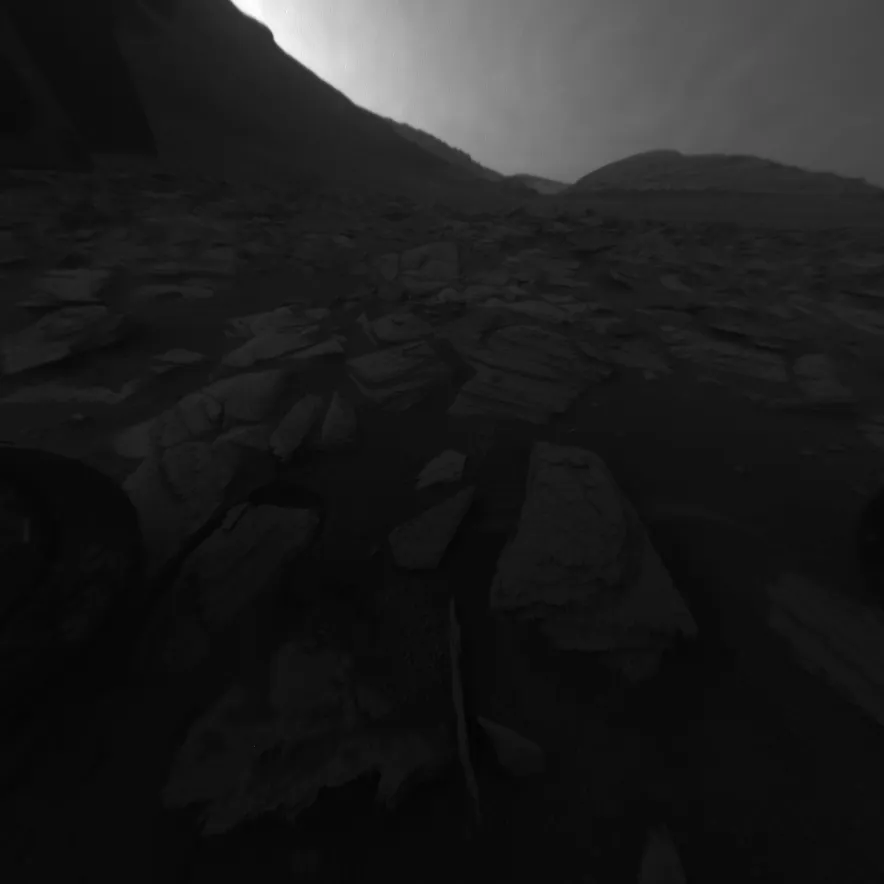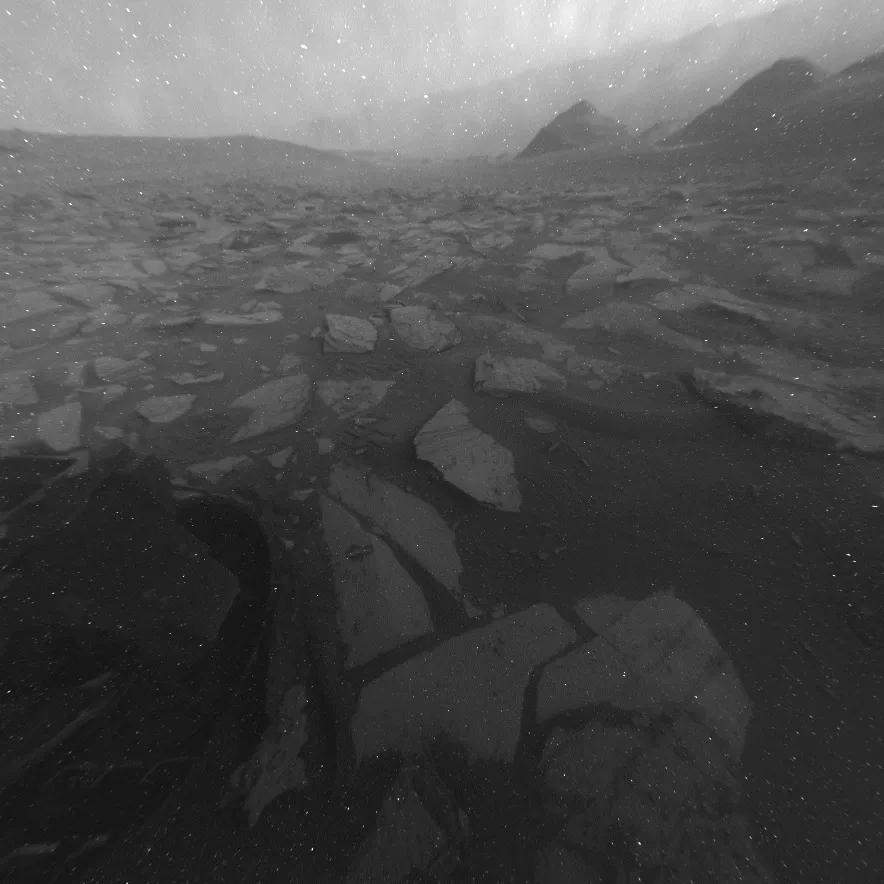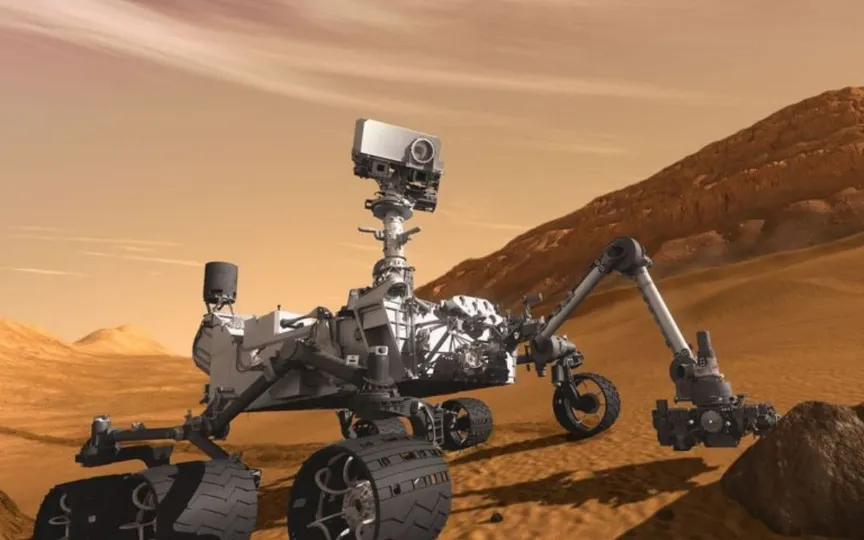NASA’s Curiosity Rover Captures a Full Martian Day from Sunset to Sunrise with ‘Hazcams’
NASA has released two new black-and-white videos from its Curiosity Rover capturing a Martian day from dusk to dawn on Nov. 8, which happened to be the mission’s 4,002nd Martian day.
In the first video, the Curiosity Rover can be seen using black and white Hazcams to capture a 12-hour window of a Martian day. Everything changes dynamically, from the shadow the rover casts on the surface of Mars to how it gets dark. The video is from Gediz Valliks, a valley on Mount Sharp, a 5 km high mountain in Gale Crater.

“The instructions for recording the videos were part of the last set of commands sent to Curiosity just before the start of the Martian solar union, the period when the Sun is between Earth and Mars,” NASA says. But the Sun’s plasma can interfere with radio communications, so “missions will delay sending commands to Mars spacecraft for several weeks during this time.”
NASA further notes that Curiosity’s Hazcam is typically used to identify rocks, slopes and other hazards that could be dangerous to rovers. However, with the rover’s other functions deliberately scaled back before rendezvous, NASA took the opportunity to allow the Hazcams to record 12 hours of footage for the first time – in an attempt to capture clouds on Mars and “dust devils” to better understand Martian weather patterns.
Additionally, another video captures footage from the rear hazcam, looking northwest down the slopes of Mount Sharp. The footage shows a cosmic ray hitting the camera’s sensor, which materializes as a small black artifact in the 17th image.

NASA further claims that the noise and bright flashes in the video are caused by several factors, including heat from the spacecraft’s propulsion system and long exposure times.




